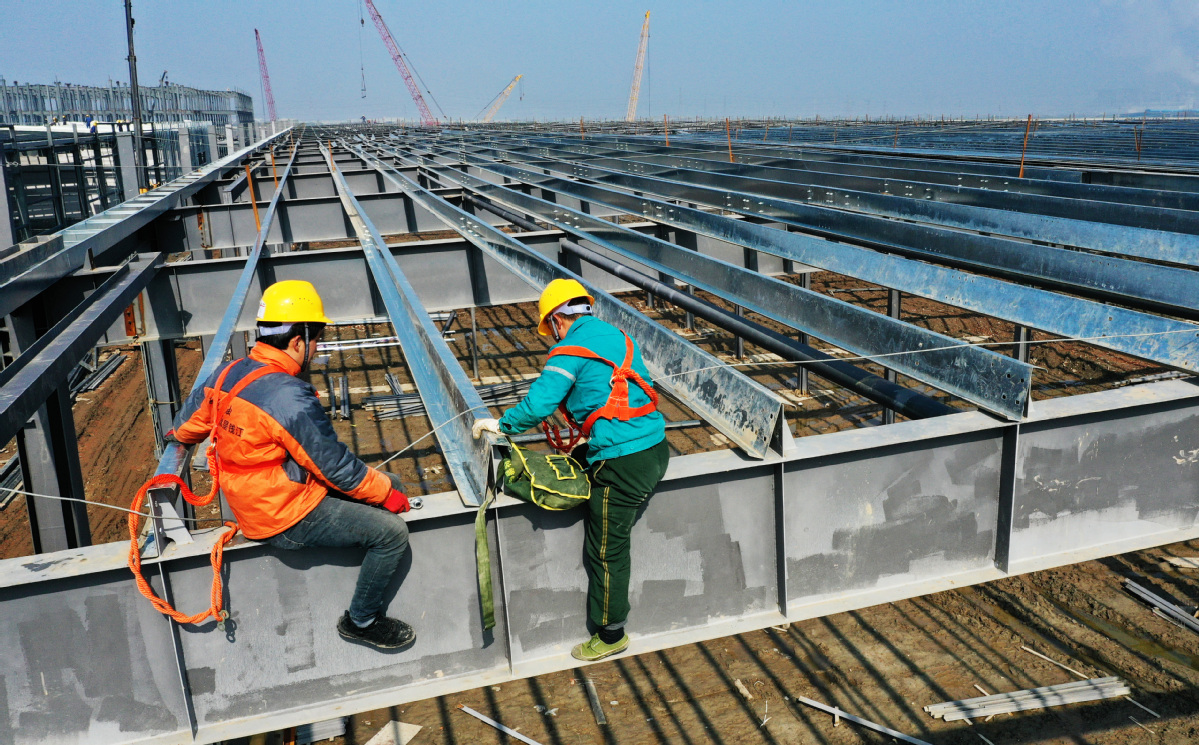
Skechers, the US-based athleisure company, will invest up to 1.8 billion yuan ($279 million) to expand its distribution facilities in Taicang, Jiangsu province, in the third quarter of this year.
The expansion will help Skechers to meet surging market demand in China. In late December, the company set up a distribution center in Taicang by investing 1 billion yuan, said Willie Tan, CEO for the company's operations in China, South Korea and Southeast Asia.
Chinese consumers now have strong purchasing power, he said. The signing of the Regional Comprehensive Economic Partnership agreement and the upgrading of e-commerce businesses during the COVID-19 pandemic have introduced a new market dynamic. Skechers found that its current operational capacity will no longer meet the increased market demand.
"Therefore, it's necessary for us to raise investment to build the second phase of our distribution center in Taicang," he said, adding that building advanced distribution and logistics facilities is key to competing with other established rivals such as Nike Inc, which is also building similar facilities in China.
As Taicang has a well-developed container port and Customs office, as well as a convenient location to connect many eastern Chinese cities, the Skechers distribution center will further enhance the company's overall supply chain competencies.
The expanded Taicang facility will play a key role alongside the company's other businesses in building a more comprehensive logistics network in China and other markets, particularly in the Asia-Pacific region, the company said.
Tan said his team is studying the policy details of the RCEP and hopes to boost two-way trade of its products between China and the markets of the Association of Southeast Asian Nations.
In addition to expanding presence in top-tier cities and working closely with domestic logistics service providers, Skechers will open more brick-and-mortar stores in China's lower-tier cities to reach more consumers, Tan said.
He also said it has become a practical option for Skechers to open super-large stores in third-and fourth-tier cities such as Anshan in Liaoning province and Xiaoyi in Shanxi province, which have a relatively limited number of shopping malls.
Compared with traditional department stores, many consumers prefer to go to shopping malls with their families, especially with kids, as these places gather more businesses like restaurants, cinemas, supermarkets and skating rinks, he said.
With more Chinese consumers prioritizing health and fitness, the sales of walking shoes and children's footwear have jumped in recent years. Skechers will deploy more resources to further develop and diversify women's sporting goods, Tan said.
"Demand for these products has been growing among consumers of digital-savvy millennials and Generation Z-those born between 1996 and 2010, triggering a new round of interest for our products," he said.
"It's equally important for us to constantly update observations of consumer behavior, in order to improve productivity, retail capacity and branding power."
In late December, Skechers forged a partnership with Shanghai Disney Resort to promote sales of its products at Shanghai Disneyland theme park.
Guo Xin, a marketing professor at Beijing Technology and Business University, said brand collaboration arouses consumers' curiosity, giving them a new reason to spend.
She elaborated: "It usually generates unexpected market feedback. Their brand image can not only be promoted but also be used to boost sales.
"Young Chinese consumers have a strong desire to shop, showing individuality, and they are keen to share their ideas. Under such circumstances, innovative products are more attractive to them."
As China has recovered from the first wave of the pandemic in an exceptional manner, Skechers saw its local sales jump almost 24 percent year-on-year in the third quarter of 2020. The company entered China in 2008, and now runs nearly 3,000 stores, including 150 super-large shops.
"Chinese consumers are becoming more rational, and they are not blindly following the crowd to imitate others," said Zhang Yongjun, a researcher at the Beijing-based China Center for International Economic Exchanges.
"In the past, some fast fashion and certain sports companies imitated the designs of luxury brands and attracted some consumers in China. Now it's not like that anymore. This has pushed many brands to reposition themselves, improve the quality of their goods and produce more durable products."
